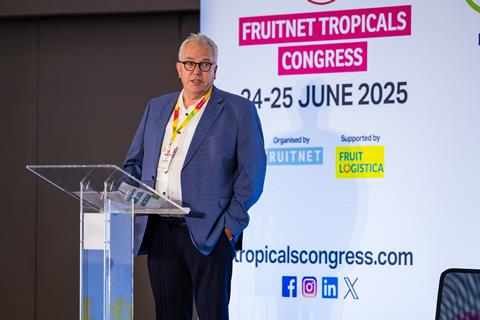Arie Havelaar of Dutch company Sawari Fresh explains how regional collaboration, sustainable practice, and data-driven insight can create new, local supply
You probably use ginger and garlic every week. But behind them is a supply chain that is anything but simple, with rising costs, labour shortages, and climate stress. These everyday ingredients expose everything that is broken in our global food system.
Ginger is mostly grown in Brazil, China and Peru by thousands of small farmers with low traceability, then shipped in bulk across oceans. Garlic is still dominated by China, with some grown in Europe.
But this isn’t about ginger and garlic alone. These crops reflect a lack of industry control and resilience. It’s not what we grow, it is how and where.
So we asked: what if we grew these crops here in Europe? Not for the novelty, but to shorten the chain, cut emissions, and regain control.
It wasn’t easy. But with the right knowledge and partners, it does work, albeit for a higher price. Having proved it with ginger, we built a model for garlic that connects the dots between regional collaboration, sustainable practice, and data-driven insight.
What we are creating isn’t exclusive. It’s a blueprint, a system that can travel across crops, across regions. That’s the real opportunity. Not simply local farming, but local intelligence.
Here’s the truth. Farming today isn’t just about crops. It’s about logistics, it’s about insight, it’s about technology. We are no longer just growers. We are designing food systems that are fresh, future proof, and resilient.

Automation for the people
Most of our industry still relies on manual labour for sorting, packing and tracking. That won’t work in a long term, but automation doesn’t have to be solely for the giants. At Sawari Fresh we have invested in smart tools like GreenCommerce, so we can work with a small team but run it like a large one when it comes to arranging logistics, tracking inventory, and building efficiency.
The best part is that this is not out of reach. It’s smart, lean, and ready to scale with us. Like our sorting system with AI-learning computer data, which instruct robots to sort according to the client’s needs.
And packaging, which seems a small thing, but speaks before your product does. Consumers are looking for values, not vegetables. That’s why we are developing bio-based, compostable packaging materials. It’s not just better for the planet, it’s smarter business, long shelf-life, fewer returns, and has built-in traceability.
There is also something broken in how we treat waste. What if rejections and off-cuts weren’t the end of the line? Together with Faiafood, we are turning that waste into new value – purées for consumers and foodservice, feed for animals, and even sustainable packing materials.
One project doesn’t shift an industry, but it creates a platform that can. Because the real power isn’t the product, it’s the process. Do we keep reacting to crises, or do we build something better?
The tools exist. The market is ready. The only missing piece is action, and that part is up to us.



